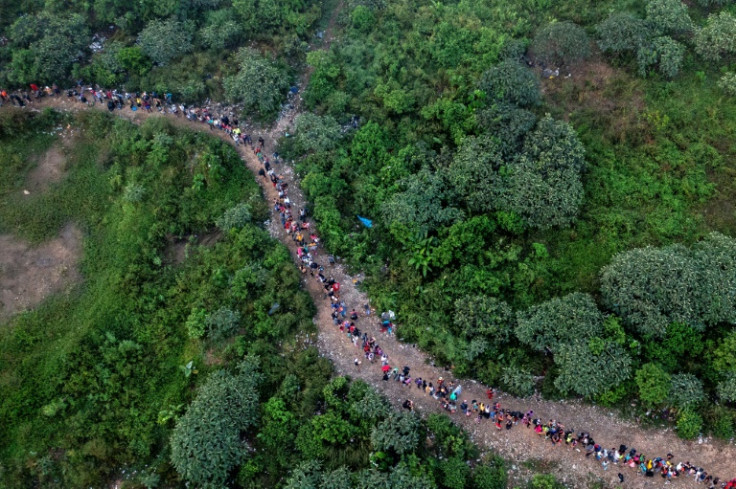
Sexual violence has become increasingly commonplace at the Darién Gap, the treacherous pathway between South and Central America that hundreds of thousands of migrants are increasingly taking when migrating up north.
According to Médecins Sans Frontières (MSF), there has been a sevenfold increase in the monthly average of sexual attacks, even as the total amount of people crossing has decreased in December, in accordance with historical trends.
Concretely, the NGO recorded 214 cases in the last month of 2023. The average was about 30 between January and September of the same year. And the figure could be higher, considering many cases go unreported as victims continue their journeys, usually to the United States, or are silenced by those committing the acts against them.
The Guardian reported that cases include rape of men and women in front of their families as a form of punishment for not paying human traffickers. Members of these groups are also detaining migrants after they enter the jungle and forcing them to remove their clothes to search them for money.
Over half a million people crossed the Darién Gap in 2023, more than double than the year prior. Around a quarter of the total were minors, according to the Panamanian government.

The Panamanian government led by president Laurentino Cortizo has repeatedly asked for international aid to deal with the influx of migrants, which has skyrocketed in the past years. This is a national security problem," said Panamanian official Samira Gozaine at a government event. "Unfortunately, we do not have a quick solution to solve it."
Most of those braving the crossing, which can take up to six days, were fleeing economic misery in Venezuela, with more than 320,000 risking it all in the jungle this year, the government said.
Ecuadorans and Haitians were the next biggest groups, while over 25,000 Chinese citizens also took on the trek.
Vietnamese, Afghans and citizens of Cameroon or Burkina Faso were also recorded. Panama authorities in September announced a series of measures to try and contain the surge in migration, such as an increase in deportations of people who enter the country illegally. It remains to be seen whether the measures have been effective, as traffic could decrease in January given the high temperatures in the Southern Hemisphere's summer.
Migrants face rivers, wild animals, and violent criminal gangs in the jungle. Upon arrival in Panama, they head to Costa Rica, and then Nicaragua, Honduras, Guatemala and Mexico, before many make their way to the United States border.
© 2024 Latin Times. All rights reserved. Do not reproduce without permission.







